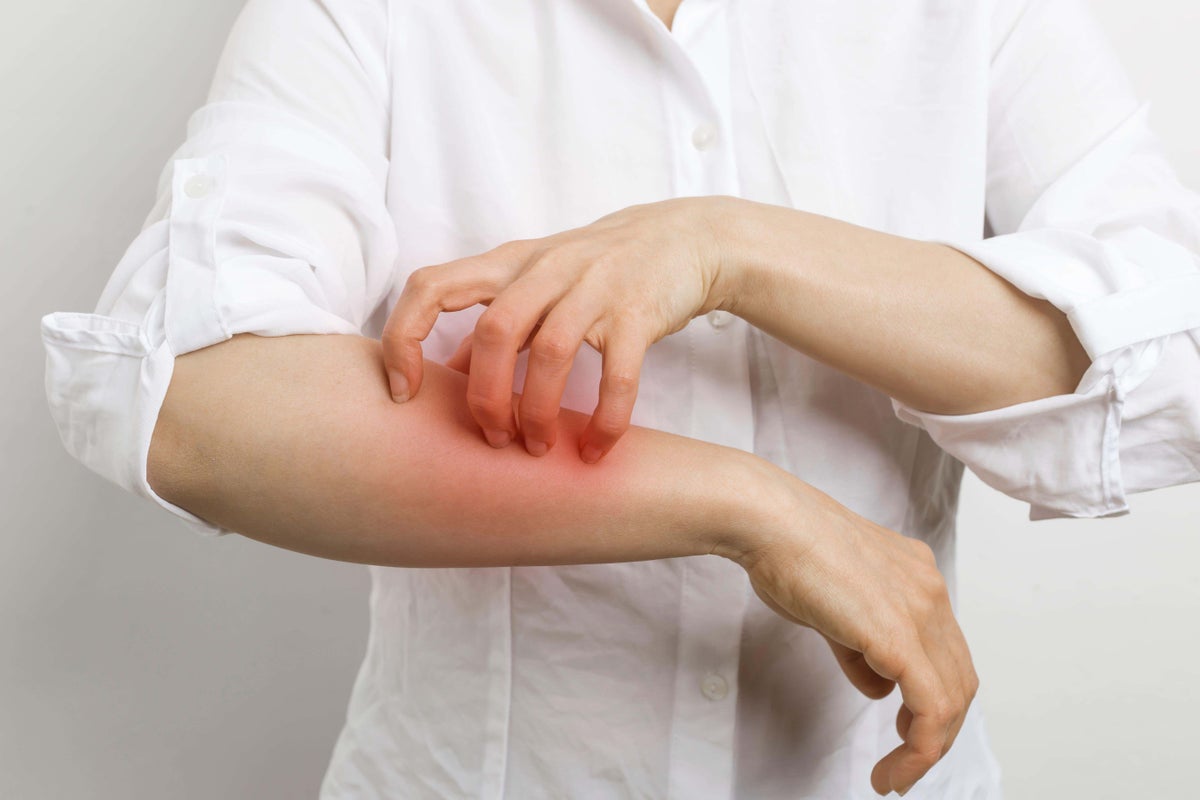
How to spot, treat and prevent scabies
Scabies is a common skin condition, yet is widely misunderstood.
It causes itching and rashes, much like other skin conditions, which can make it very difficult to identify. To provide clarity, we’ve reached out to some experts who have offered some guidance on how to recognise, treat, and prevent this contagious condition.
What is scabies?
“Scabies is a common skin infestation caused by the Sarcoptes scabiei mite,” explains Dr Miriam Mikicki, GP and functional medicine practitioner at health.miro. “These mites lay eggs under the skin, causing an allergic reaction that leads to intense itching and a distinctive rash.”
When a person is first infected, it can take up to eight weeks for symptoms to appear, according to the NHS website, as the body needs time to develop an allergic reaction to the mites.
The NHS website also states that scabies often affects skin between the fingers, around the wrists, under the arms, and around the waist, groin and bottom.
“Scabies mites prefer warm, moist areas of the body, such as external genitalia, beneath the breasts, between the buttock folds, webs of the fingers and toes, and under the fingernails,” explains Dr Aleksandar Godic, consultant dermatologist at The Harley Street Dermatology Clinic.
People with a weakened immune system can sometimes get a rare type of scabies called crusted (Norwegian) scabies, according to the NHS website.
“This form involves a widespread infestation with a large number of mites and is highly contagious,” notes Godic.
What are the symptoms?
“The most characteristic sign of scabies is the presence of burrows, which appear as small, curved lines on the skin,” says Godic. “However, these can be difficult to see.
“Other common symptoms include small, weepy spots, redness and swelling, intense itching, especially at night or in warm environments, inflamed, scaly scratch marks, often resembling severe eczema.”
When should you seek medical advice about a rash?
“You should seek medical advice if a rash is persistent, worsening or intensely itchy, particularly if it doesn’t respond to over-the-counter treatments,” advises Dr Sophie Momen, consultant dermatologist at the Cadogan Clinic.
“Scabies should be suspected if multiple household members are itching, the rash appears in classic areas like between fingers or around the waist, or if burrow marks are visible. If you develop signs of infection (such as pus, swelling or fever), immediate medical attention is necessary.”
Is it infectious?
Scabies is highly infectious.
“Scabies spreads primarily through prolonged direct skin contact with an infected person,” says Godic. “In rare cases, it can also be transmitted through infested towels, clothing, or bedding.”
Momen adds: “Because symptoms can take several weeks to appear, people may unknowingly spread scabies before realising they are infected, making early detection and treatment crucial.”
Who is at higher risk of getting scabies?
Anyone can get scabies, but people in close-contact environments are at higher risk.
“Infants, the elderly, and those with weakened immune systems are more vulnerable, as their bodies may struggle to control the infestation, sometimes leading to crusted scabies,” says Momen. “Healthcare workers, carers and individuals with frequent skin-to-skin interactions also face an increased risk of exposure.”
Can scabies be treated?
Scabies is not usually a serious condition, but it does need to be treated.
“First-line treatment usually involves a permethrin-based cream, which effectively kills the mites,” says Godic. “But, if permethrin is ineffective, a lotion containing malathion may be used.
“For severe cases (crusted scabies), oral ivermectin is prescribed.”
Since the itching is caused by an allergic reaction, symptoms may persist even after the mites are eliminated.
“To relieve discomfort, doctors may prescribe topical steroid creams for inflammation and itchiness,” adds Godic.
All close contacts must be treated simultaneously to prevent reinfection, adds Mikicki.
Is it preventable?
“Preventing scabies involves avoiding prolonged skin contact with infected individuals and not sharing personal items like clothing or bedding,” says Momen. “In high-risk settings, frequent hand washing and maintaining personal hygiene helps reduce transmission.”










